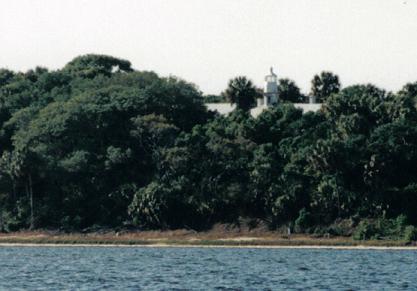In 1854, George Meade, who would later become a general in the Civil War, oversaw the construction on Seahorse Key, which is the largest of the chain of islands. The lighthouse, costing $12,000 to complete, was a simple one-story dwelling with a short tower perched on its roof. Although the building stood a mere twenty-eight feet in height, it was constructed at the highest point of the island, giving the light a focal plane of seventy-five feet above the water. The lantern room was fitted with a fourth-order Fresnel lens, enabling the fixed white light to be seen up to fifteen miles into the gulf.
When the Civil War broke out, the lighthouse was darkened, and its lens and fuel supply was removed from the light station. The island was protected by a small group of Confederate soldiers until they were captured by Union forces. Once the Civil War came to an end, the light was put back into service in 1866.
By the 1900’s, the majority of the fine timber had been harvested and local commercial fishing began to fizzle out. The dwindling economy brought fewer and fewer ships to the area and the lighthouse was eventually darkened in 1915. In 1929 three of the islands were designated as the Cedar Key National Wildlife Refuge, but it wasn’t until 1936 that Seahorse Key would be added to the refuge. In 1951, the lighthouse was leased to the University of Florida. Now used as a dormitory, the lighthouse is part of the Seahorse Key Marine Laboratory.
While traveling north along Florida’s Gulf Coast from Anclote Key, one is sure to encounter the small collections of islands known today as Cedar Keys. These small islands, formed by years of soil being deposited into the gulf by the Suwannee and Waccasassa Rivers, were covered by fine cedar forest, which gave the islands their name.
By the mid 1800’s, harvesting of these fine cedar trees began. Pencil manufactures began using the cedar trees to make pencils to be used in schools all over the country. As the desire for these fine trees increased, a procession of lumber ships visited the island to pick up the precious cargo. The shipping increased so much that the Lighthouse Board decided to build a lighthouse to guide these ships around the islands and mark the port of Cedar Key.


